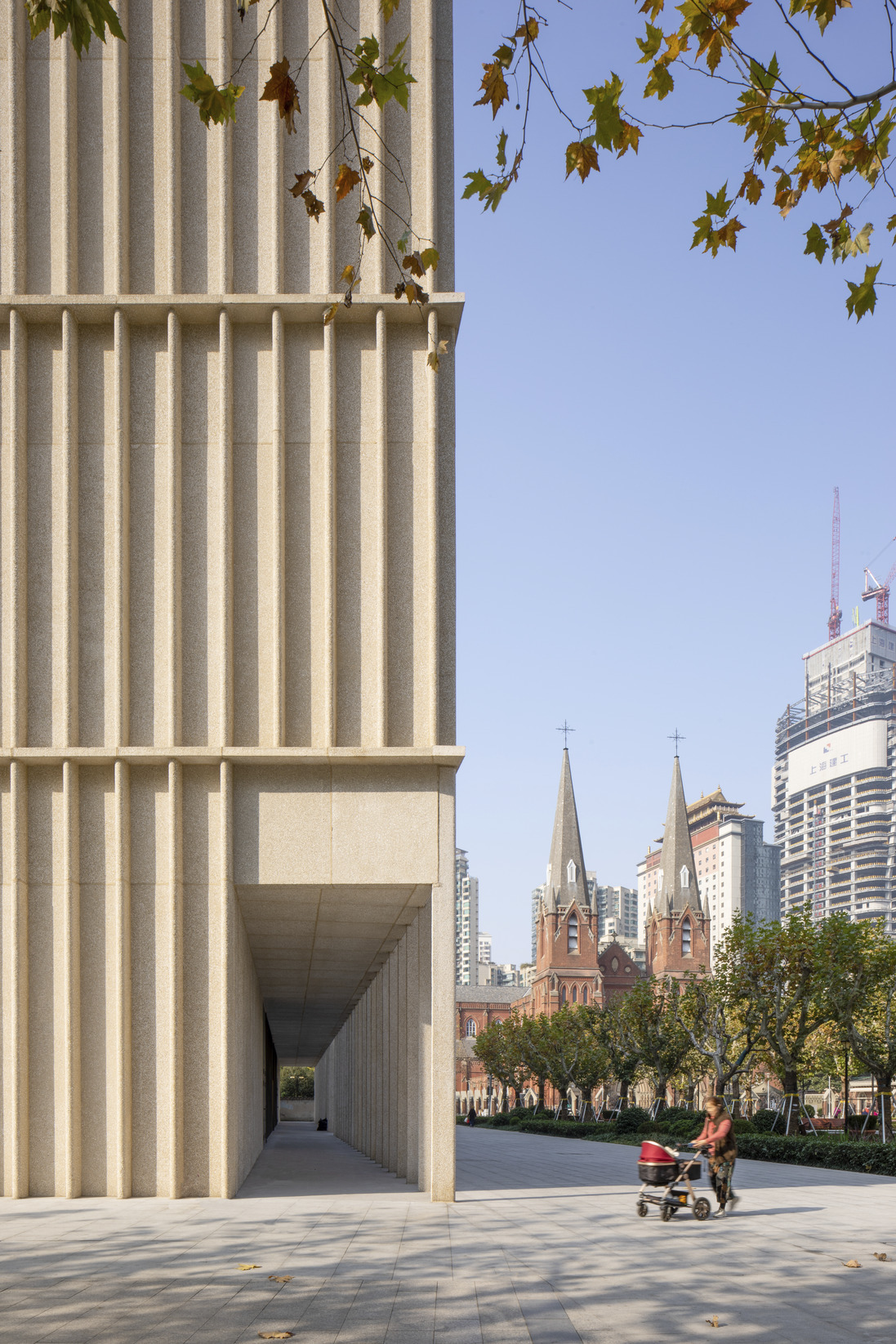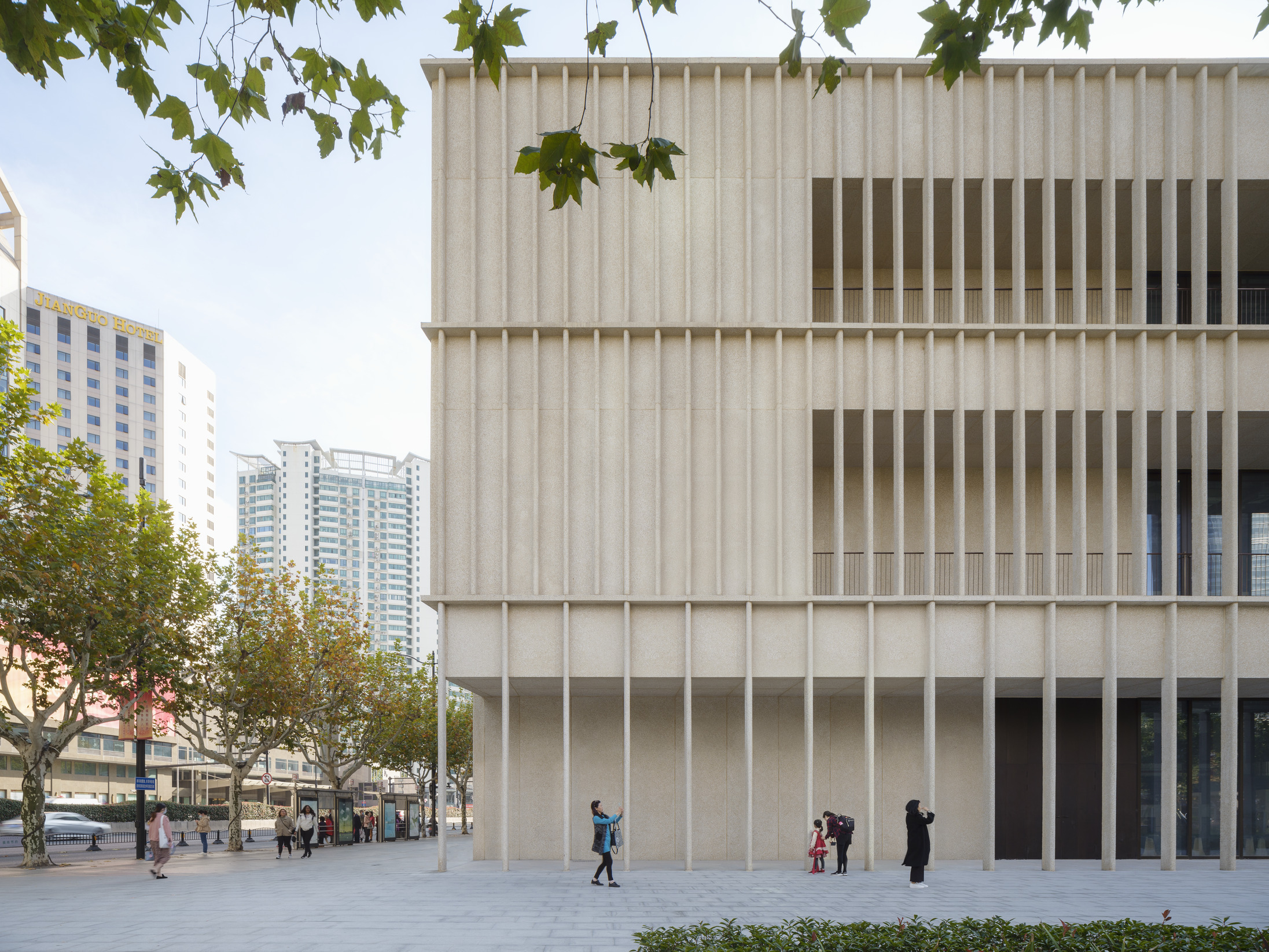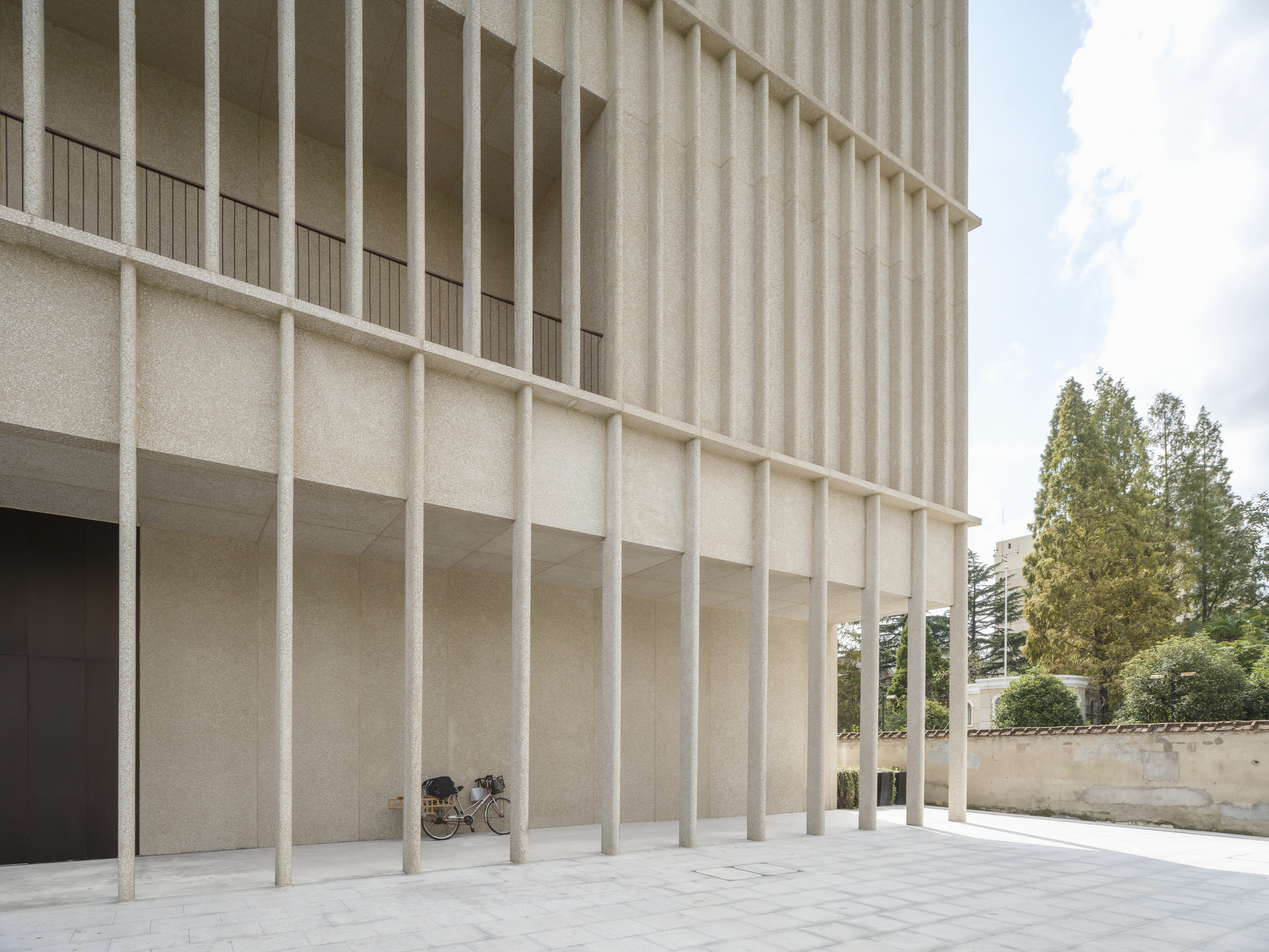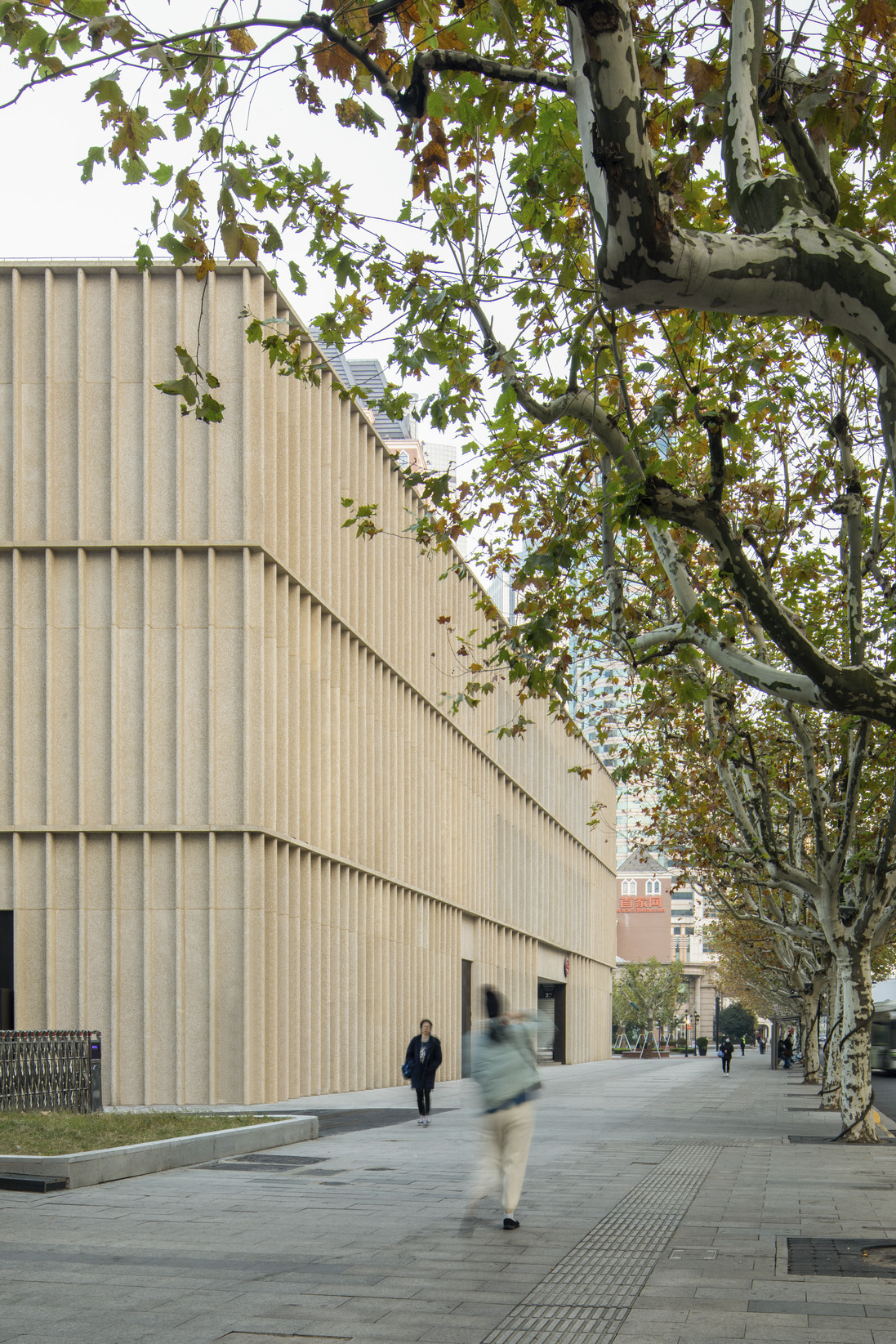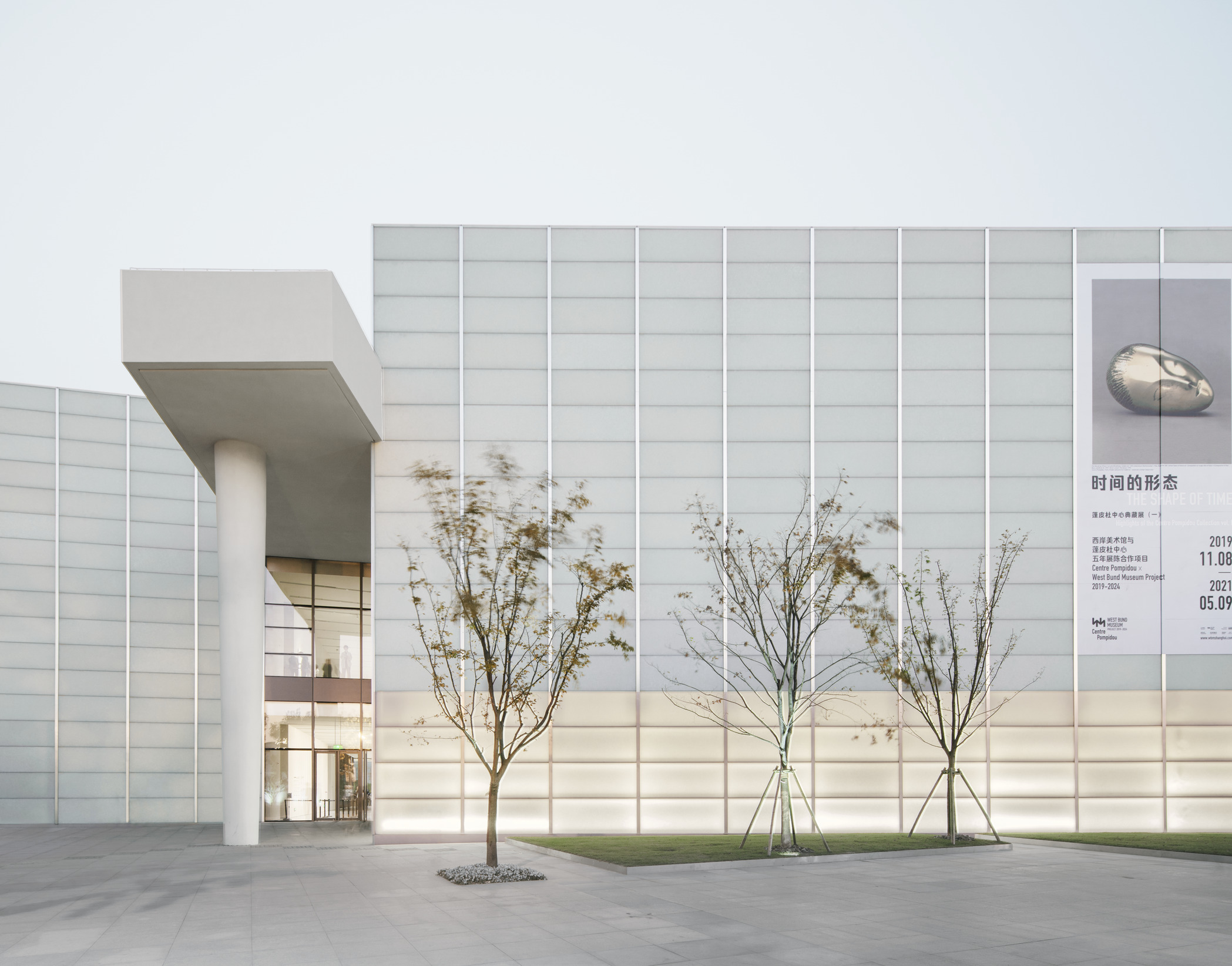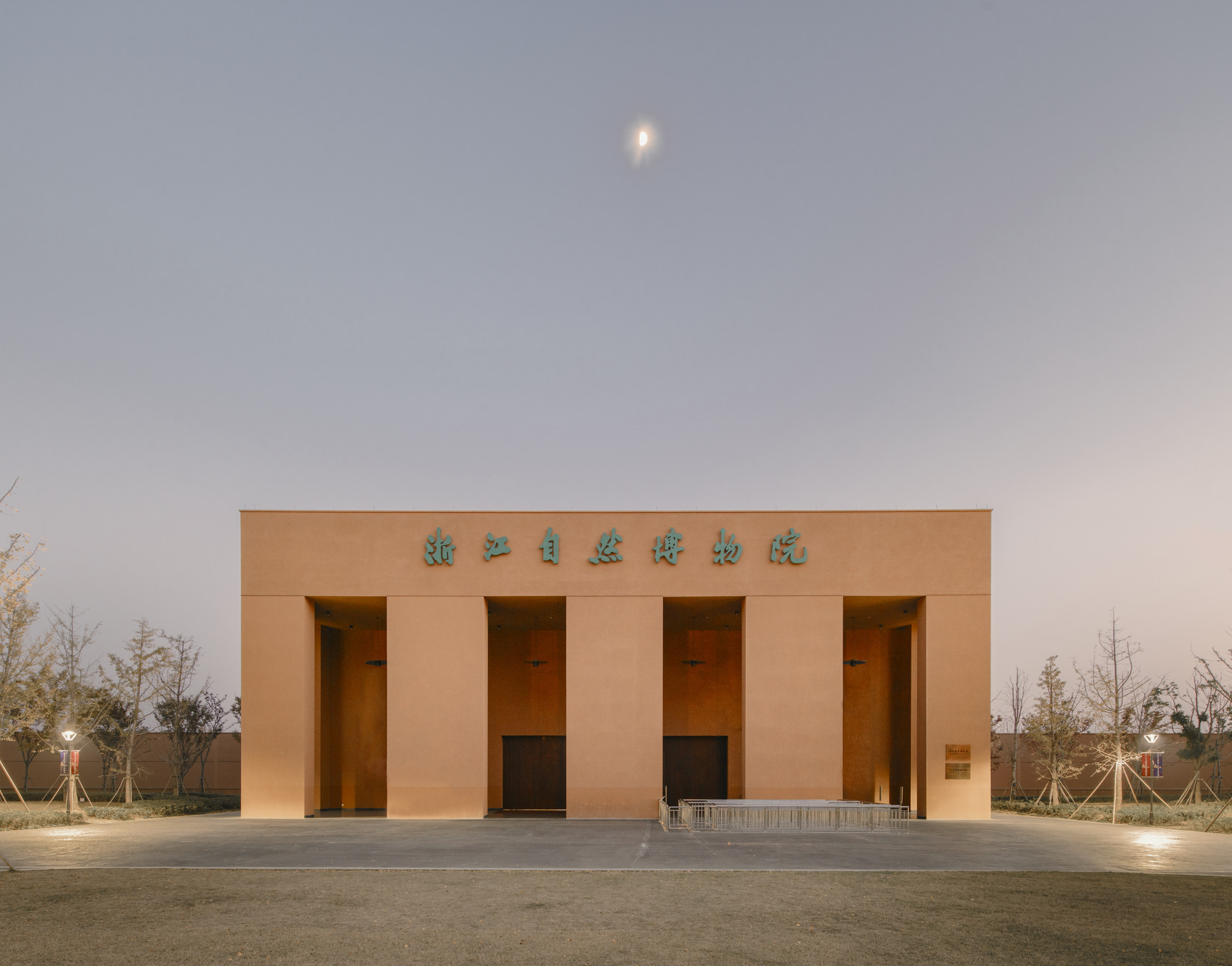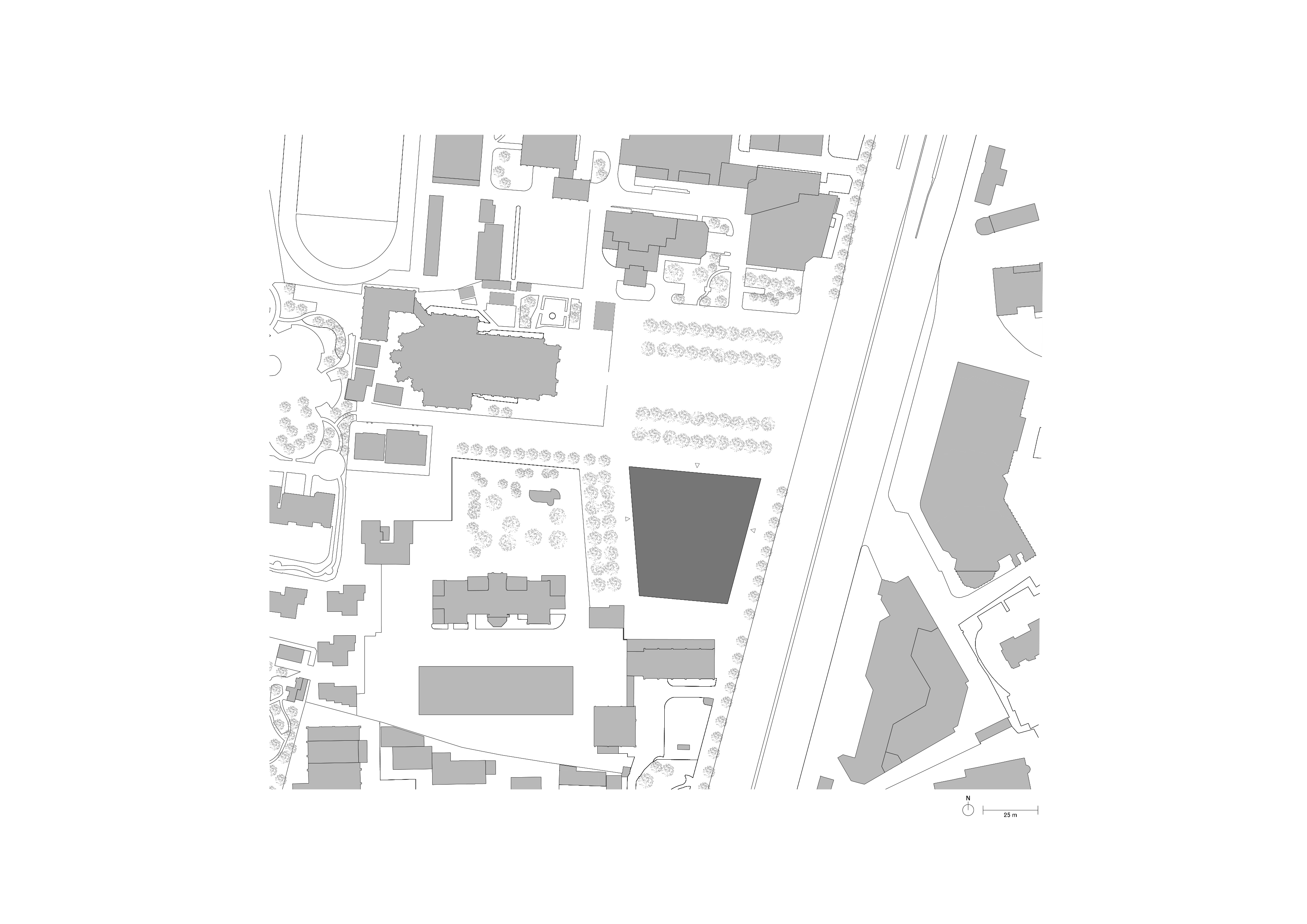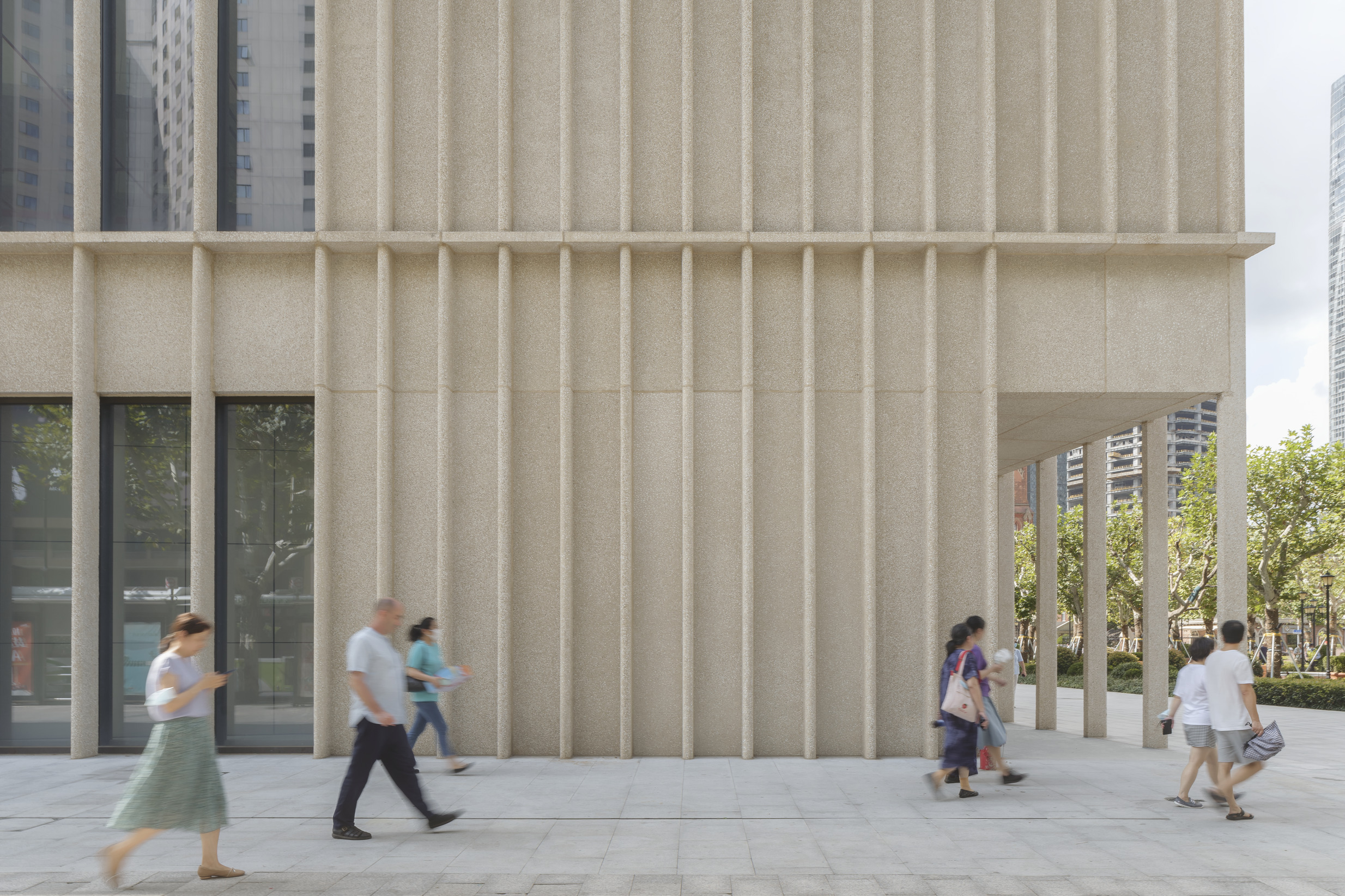Zikawei Library
Shanghai, China
2013–23
This library in an important new civic building within the Zikawei district of Shanghai and is located on Caoxi Road facing a public square. It sits adjacent to the well-preserved St Ignatius Cathedral and close to the Observatory Building and historic Zikawei Bibliotheca, perhaps the best examples of architecture built by the Jesuit missionaries in Shanghai in the early twentieth century. From the beginning the project focused on the idea of urban repair, addressing the intensive development of recent years that had left the historic buildings isolated. The new building seeks to create a context in which these buildings can be best appreciated. The massing and the location of the library re-defines the public square while strengthening the presence of the cathedral on it.
Trapezoidal in plan, the three-storey building – with an additional two storeys below ground – fans out towards the square which it meets with a colonnade at ground level and loggia on the floors above – an idea it borrows from the historic Zikawei Bibliotheca. Slender fins run vertically along the façade from top to bottom, and the openings are secondary to the rhythm of these strips. The fins envelope the building giving a sense of abstraction and unity to its massing. Towards the centre of the building their rhythm slows, accentuating the entrance.
Internally, the entrance opens directly into a central, triple height atrium that runs deep into the building and is dedicated entirely to books, with circulation and other functions located around the perimeter. The central space is defined by two ‘bookshelves’ on either side of the atrium. The structure is not exposed but rather becomes part of the bookshelves while mezzanine floors give human scale to the space. The atrium is conceived as a forum where reading, cultural events, lectures and art installations can take place, creating an active public venue. The loggias on the second and third floor are quiet external spaces connecting back to the square and the cathedral.
Comprehensive research on local traditional building materials resulted in the use of concrete made with reconstituted stone elements; its light colour contrasting with the red brick used on St Ignatius Cathedral. As an important piece of new social infrastructure, the building has a civic presence on the square while its sensitive massing and the considered choice of materials ensure historic continuity and contribute to the improvement Zikawei’s urban environment.
Data and credits
- Project start
- 2013
- Completion
- 2023
- Gross floor area
- 14,830m²
- Client
- Xujiahui Subdistrict Office of Xuhui District of People’s Government
- Architect
- David Chipperfield Architects Berlin and Shanghai
- Partners
- David Chipperfield, Mark Randel, Libin Chen
- Project architect
- Sascha Jung, Alessandro Milani, Chuxiao Li
- Project team
- Fengjuan Sun, Nora Wuttke, Pavel Frank, Nicolas Gustin, Zhexu Du, Miguel Angel
- Local design institute
- Shanghai Tianhua Architecture Planning & Engineering Limited
- Landscape architect
- Design Land Collaborative


